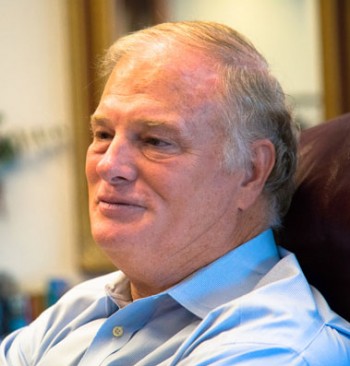Twenty-six years ago, Mark Fischer made a $50,000 bet on himself. He scraped together the funds, hired a secretary, and got to work. Today, Chaparral Energy has 800 employees and an enterprise value of $3.5 billion. Fischer—Chaparral’s chairman, CEO, president, and cofounder—details the recent changes in the industry, how he’s navigated the boom-bust cycles of the past, and where he hopes both the company and the industry will go from here.
Companies in your industry have to stay relevant. What’s been your biggest change lately?
Mark Fischer: We were once more oriented around acquisitions, but about five years ago we started focusing more on drilling. We had acquired a substantial legacy acreage position, which we are now developing along with other recently acquired leasehold. Our other main growth area is in CO2 enhanced oil recovery (EOR), where we inject CO2 into old oil fields to recover more reserves. Forty percent of our capital budget is in this growth driver, and the rest is in drilling.

Not many companies see the growth you’ve seen. Is this what you had in mind when you started in 1988?
Fischer: I never in my wildest dreams thought it could grow to this magnitude. The early years were slower, as I grew the company with debt. We bought properties and companies, borrowed on those acquisitions, and repeated the process over and over. Because of the debt level, we also forward sold our oil and gas when prices were attractive to lock in revenue streams. We bought Calumet Oil in 2006 for $500 million to support CO2 EOR programs. Just before that, we had a $150 million acquisition with Bristol Resources Properties, and, in 2010, we brought in an equity partner that infused $325 million into our operation so we could continue our growth into the future.
You were even growing during the last downward trend in 2012. Why?
Fischer: Oil and gas pricing increased between 2009 and 2011 as our nation recovered from the recession, but in 2012 the prices started to fall. Natural gas was $4/mcf [thousand cubic feet] and fell to $1.76. It’s difficult to grow a company when prices fall because all you can do is try to offset it with increased production to stay even. We took a different approach. We forward sold our oil and gas in 2011, so when things got bad in 2012, we had already sold at prices that were locked in.
But there’s risk to this, because prices could go the other way.
Fischer: That’s true, but it’s our approach, and with it we’ve had earnings growth every year of 10–15 percent. Looking forward, we’ve hedged in the same way through 2014 and 2015 at prices I believe will be equal to or above the market. We see it as an insurance policy. We don’t mind giving up some upside in return for the stability we get on the downside. We’re locking in at prices that ensure growth. On our hedging program, we wait for what we think are peaks in the pricing market and we lock in at those prices.
What are your latest projects?
Fischer: We’re very active in three main growth areas: CO2 enhanced oil recovery, the North Oklahoma Mississippi Lime Play, and the Panhandle Marmaton Play.
How do you analyze where you want to invest in CO2 EOR?
Fischer: You have to find opportunities that others have missed. We go out and find oil fields that are considered to be depleted. Then we take our knowledge and expertise and go through the fields and pick out those that are receptive to the CO2 process. We’ve been recovering about one third of the amount of oil ever generated from these fields through this EOR process. We’re recovering oil other companies left behind and gave up on.
And in terms of long-term goals?
Fischer: You’ve got to decide where you want to take the company. We’re eyeing the public markets with a possible 2014 entry. To accomplish that, it meant we had to shift out strategies, because most investors want you to be best in class with a very specific focus area.
What have you changed specifically?
Fischer: We’ve sold off assets in the Rockies and are selling off assets in most parts of Texas, Louisiana, and Arkansas, so we can reapply those proceeds to expansion of our three growth drivers in the Mid-Continent. We’re becoming a pure Mid-Continent player to attract investors. We’re also increasing our drilling activity, because drilling gives near-term growth and a more immediate return than the less risky EOR growth driver.
Where do you see the industry going in the next five years?
Fischer: It’s an interesting time. The country is seeing dramatic increases in produced volumes of oil and gas. I’ve not seen anything like it since the early ’70s. We’re approaching the possibility of energy independence. There are gas supply surpluses in the US that have driven prices down because it is a national commodity. We’ve not seen that same impact on oil yet, since oil is a global commodity, but it’s looming. This could be good for the consumer in that we could see oil priced at $70 per barrel instead of $95.
And that could help fix the negative image some people have of your industry.
Fischer: [Laughs.] It could. People don’t understand that producers do not set the price. It’s the companies that buy the oil and gas, and it’s a function of demand for the product. If demand for gasoline goes up, they mark it up. We have almost nothing to do with actually setting the price.

